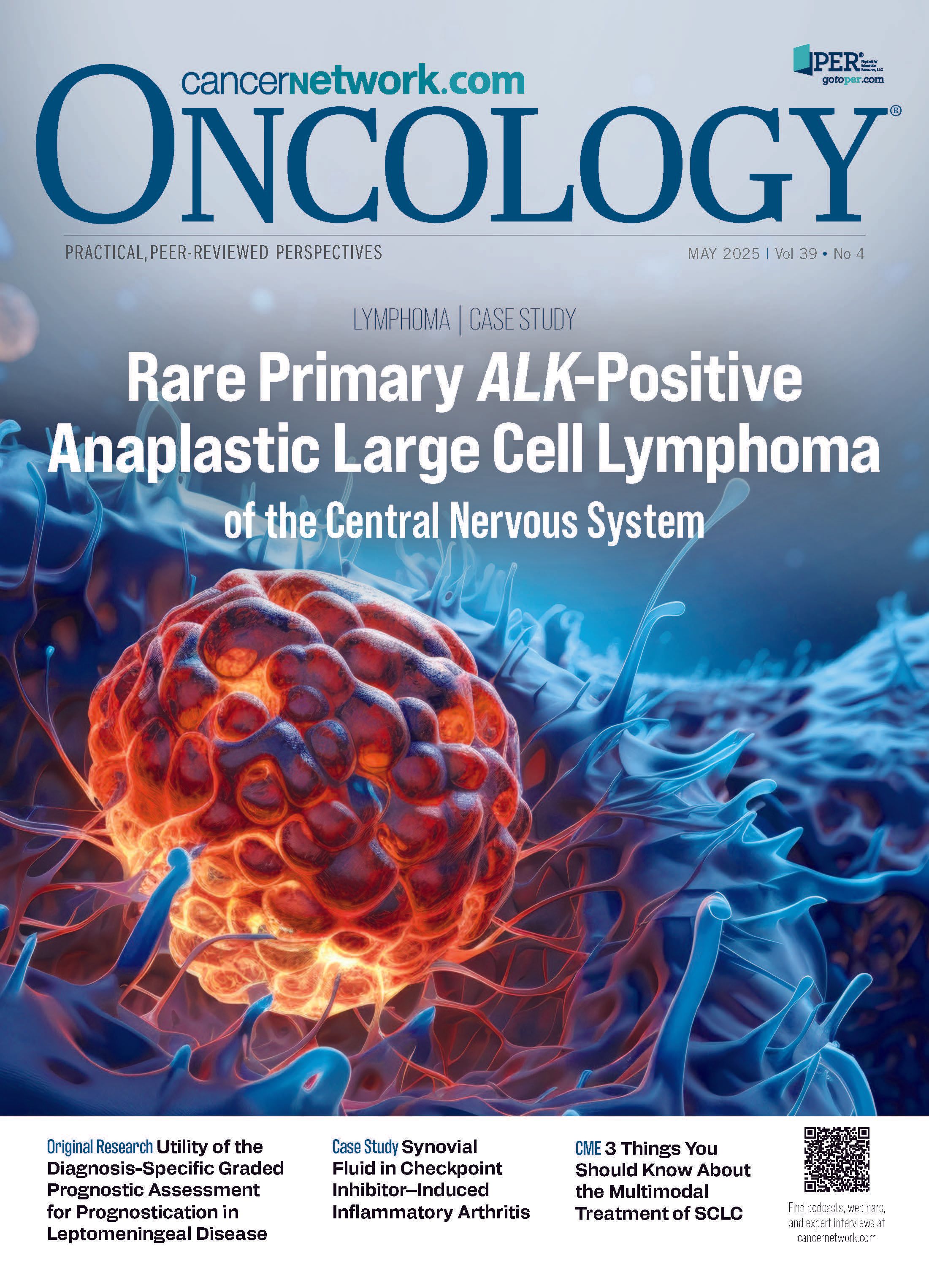Recent ADC Approvals and Their Impact on the Breast Cancer Space
Neil M. Iyengar, MD, highlighted the recent T-DXd and Dato-DXd approvals in breast cancer.
Neil M. Iyengar, MD, Associate Attending, Breast Medicine Service Memorial Sloan Kettering Cancer Center New York, NY

The availability and use of antibody drug conjugates (ADCs) have significantly improved outcomes in breast cancer treatment. The ADC class includes cancer therapies that consist of a monoclonal antibody conjugated to a cytotoxic agent known as the payload. This structure allows for the selective delivery of chemotherapy to cancer cells that express the target antigen. Release of the payload also allows for targeting of adjacent cancer cells within the tumor microenvironment, known as the bystander effect. Targeted delivery of cytotoxic agents has led to increased efficacy and better tolerability, though ADCs can have unique adverse effects (AEs). The ADCs currently approved for breast cancer treatment include trastuzumab emtansine (T-DM1; Kadcyla), fam-trastuzumab deruxtecan-nxki (T-DXd; Enhertu), sacituzumab govitecan-hziy (SG; Trodelvy), and datopotomab deruxtecan-dlnk (Dato-DXd; Datroway).
Based on the results of the phase 3 DESTINY Breast-06 trial (NCT04494425), on January 27, 2025, T-DXd was approved by the FDA for the treatment of unresectable or metastatic hormone receptor–positive (HR+), HER2-low or HER2-ultralow breast cancer that has progressed on 1 or more endocrine therapies (ET) in the metastatic setting.1,2 The PATHWAY anti-HER-2 (4B5) Rabbit Monoclonal Primary Antibody assay (Ventana) was also approved as a companion diagnostic device to identify patients with HER2-ultralow breast cancer for treatment with T-DXd. The DESTINY Breast-06 trial tested earlier use of T-DXd, after progression on ET, but before use of chemotherapy. The trial also included patients with MBC who expressed HER2 at ultralow levels. In this study, 866 patients with HR-positive MBC and progression on 1 or more lines of endocrine-based therapy but no patients in the metastatic setting, were randomly assigned to receive T-DXd or physician’s choice chemotherapy. With a median follow-up time of 18 months, in the intent-to-treat population (ITT), the median progression-free survival (PFS) was 13.2 months (95% CI, 12.0-15.2) in the T-DXd arm and 8.1 months (95% CI, 7.0-9.0) in the standard chemotherapy arm. In the HER2-ultralow group, similar efficacy was observed: median PFS was 13.2 months (95% CI, 9.8-17.3) and 8.3 months (95% CI, 5.8-15.2), respectively. Treatment with T-DXd also demonstrated superior tumor response. In the ITT population, the confirmed objective response rate (ORR) was 57.3% (95% CI, 52.5-62.0) for T-DXd and 31.2% (95% CI, 26.8-35.8) for standard chemotherapy. Consistently, in the HER2-ultralow group, confirmed ORR was 61.8% (95% CI, 50.0-72.8) for T-DXd and 26.3% (95% CI,16.9-37.7) for standard chemotherapy. At the time of initial reporting, the overall survival data (OS) were 38% mature for the T-DXd group and 41% mature for standard chemotherapy. At the time of data cutoff, the difference in OS between treatment groups was not statistically significant (HR, 0.83; 95% CI, 0.66-1.05; P = .1181), and follow-up is ongoing. Safety and tolerability were consistent with prior trials of T-DXd, with 11.3% of patients who experienced any grade interstitial lung disease (1.6% grade 1, 8.3% grade 2, 0.7% grade 3, and 0.7% grade 5). Overall, these results demonstrate the efficacy of T-DXd as first-line therapy after progression on ET for HR-positive, HER2-low, and HER2-ultralow MBC. The approval of T-DXd in this setting expands treatment options and moves T-DXd earlier in the sequence of therapies. However, patient preferences, toxicity profiles, and other factors need to be considered when selecting a first-line cytotoxic treatment.
Another ADC, Dato-DXd, was approved on January 17, 2025, for the treatment of HR-positive, HER2-negative MBC after progression on endocrine-based therapy and chemotherapy in the metastatic setting.3, The differential expression of TROP-2, with higher expression in breast cancers and lower expression in normal tissues, makes this antigen an ideal target. In the phase 3 TROPION-Breast01 trial, 732 patients with HR-positive, HER2-negative MBC and progression on endocrine-based therapy and up to 2 lines of chemotherapy were randomly assigned 1:1 to receive Dato-DXd 6 mg/kg intravenously every 3 weeks or physician’s choice chemotherapy.4 Median PFS was 6.9 months (95% CI, 5.7-7.4) in the Dato-DXd arm and 4.9 months (95% C, 4.2-5.5) in the standard chemotherapy arm (HR, 0.63; 95% CI 0.52-0.76; P <.0001). Confirmed ORR was 36% (95% CI, 31%-42%) and 23% (95% CI, 19%-28%) and median duration of response was 6.7 months (95% CI, 5.6-9.8) and 5.7 months (95% CI, 4.9-6.8) in the Dato-DXd and standard chemotherapy arms, respectively. Median OS was 18.6 months (95% CI, 17.3-20.1) in the Dato-DXd arm and 18.3 months (95% CI, 17.3-20.5) in the standard chemotherapy arm (HR, 1.01; 95% CI, 0.83-1.22), though not a statistically significant difference. The AE profile of Dato-DXd is somewhat unique compared with other ADCs, and includes stomatitis, nausea, neutropenia, fatigue, and ocular effects such as dry eye and keratitis. Other common AEs include decreased leukocytes, alopecia, decreased hemoglobin, constipation, vomiting, AST/ALT elevations, and increased alkaline phosphatase.
The expanded approval of T-DXd and the recent approval of Dato-DXd will help improve outcomes in these populations, but also raise questions about the optimal sequencing of these agents. Ongoing and planned trials will address sequencing and toxicity management questions. Nuanced discussions with patients, considering preferences and practical considerations such as route of administration and schedule, are necessary components of treatment decision-making. Nonetheless, these recent approvals signal the continued progress in breast cancer therapy and the utility of the ADC class for improving breast cancer outcomes.
References
- FDA approves fam-trastuzumab deruxtecan-nxki for unresectable or metastatic HR-positive, HER2-low or HER2-ultralow breast cancer. News release. FDA. January 27, 2025. Accessed May 5, 2025. https://tinyurl.com/yay8p88m
- Bardia A, Hu X, Dent R, et al. Trastuzumab deruxtecan after endocrine therapy in metastatic breast cancer. N Engl J Med. 2024;391(22):2110-2122. doi: 10.1056/NEJMoa2407086
- FDA approves datopotamab deruxtecan-dlnk for unresectable or metastatic, HR-positive, HER2-negative breast cancer. News release FDA. January 17, 2025. Accessed May 5, 2025. https://tinyurl.com/4bads2as
- Bardia A, Jhaveri K, Im SA, et al. Datopotamab Deruxtecan Versus Chemotherapy in Previously Treated Inoperable/Metastatic hormone receptor-positive human epidermal growth factor receptor 2-negative breast cancer: primary results from TROPION-Breast01. J Clin Oncol. 2025;43(3):285-296. doi:10.1200/JCO.24.00920
